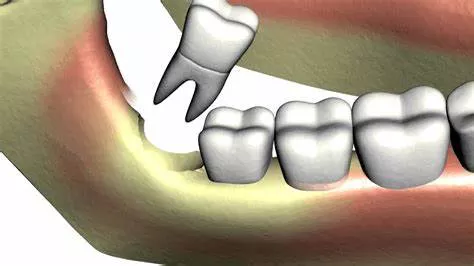Wisdom teeth, also known as third molars, are the last set of molars to emerge in the human mouth. They typically appear between the ages of 17 and 25, a period often referred to as the “age of wisdom.” While some individuals may have sufficient space in their jaws to accommodate these teeth without issues, many others face challenges that necessitate the removal of their wisdom teeth. In this comprehensive article, we will delve into the reasons why wisdom teeth removal is often recommended, exploring the various dental and oral health factors that come into play.
Understanding Wisdom Teeth
Before delving into the reasons for wisdom teeth removal, it’s essential to understand the nature of these teeth and their typical development. Wisdom teeth are vestiges from our evolutionary past when our ancestors had larger jaws that could accommodate these additional molars. However, as human jaws have evolved to become smaller over time, the emergence of wisdom teeth has become a common dental concern.
Reasons to Have Wisdom Teeth Removed
Insufficient Space and Impaction
One of the primary reasons for recommending wisdom teeth removal is the lack of sufficient space in the jaw to accommodate these additional teeth. In many cases, the jaw may not be large enough to accommodate the eruption of wisdom teeth without causing crowding or misalignment of existing teeth. This can lead to various issues such as:
Impaction: When there isn’t enough space for wisdom teeth to emerge fully, they may become impacted, meaning they are trapped beneath the gum line or partially erupted. Impacted wisdom teeth can cause pain, swelling, and increase the risk of infection.
Crowding: The emergence of wisdom teeth can exert pressure on adjacent teeth, causing them to shift position or become crowded. This can affect the overall alignment of the teeth and may require orthodontic treatment to correct.
Risk of Infections and Cysts
Impacted wisdom teeth create a conducive environment for bacterial growth, leading to infections such as pericoronitis, which is inflammation of the gum tissue surrounding a partially erupted wisdom tooth. This condition can cause pain, swelling, and difficulty in opening the mouth.
Moreover, impacted wisdom teeth can also lead to the formation of cysts or fluid-filled sacs around the impacted tooth.
These cysts can damage surrounding bone and tissues, leading to further complications if left untreated.
Potential Damage to Adjacent Teeth
The pressure exerted by impacted wisdom teeth on adjacent molars can cause structural damage to these teeth over time. This can result in issues such as tooth decay, gum disease, and even the need for additional dental procedures to address the damage caused by the wisdom teeth.
Orthodontic Considerations
For individuals undergoing orthodontic treatment, the presence of wisdom teeth can complicate the alignment process. Orthodontic appliances such as braces may be affected by the emergence of wisdom teeth, leading to treatment delays or the need for additional interventions to address the impact of these teeth on the overall treatment plan.
The Process of Wisdom Teeth Removal
When it is determined that wisdom teeth removal is necessary, the process typically involves the following steps:
Consultation and Evaluation: A thorough examination, including dental X-rays, is conducted to assess the position of the wisdom teeth, their impact on surrounding structures, and any existing dental conditions that may influence the treatment approach.
Treatment Planning: Based on the evaluation, a treatment plan is developed, outlining the number of wisdom teeth to be removed, the surgical approach (such as extraction under local or general anesthesia), and any pre-operative instructions for the patient.
Extraction Procedure: During the extraction procedure, the oral surgeon or dentist makes an incision in the gum tissue to access the impacted wisdom tooth. The tooth may need to be sectioned into smaller pieces for easier removal. Once the tooth is extracted, the surgical site is cleaned, and sutures may be placed to aid in healing.
Post-operative Care: After the extraction, patients are provided with post-operative instructions, including guidelines for pain management, oral hygiene practices, dietary restrictions, and follow-up appointments to monitor healing progress.
Conclusion
In conclusion, the decision to remove wisdom teeth is often based on various factors related to dental health, including insufficient space, risk of infections, potential damage to adjacent teeth, and orthodontic considerations. By understanding these reasons and undergoing timely evaluation and treatment when necessary, individuals can maintain optimal oral health and prevent complications associated with impacted wisdom teeth. If you have concerns about your wisdom teeth, consult with your dentist or oral surgeon for personalized guidance and recommendations.

